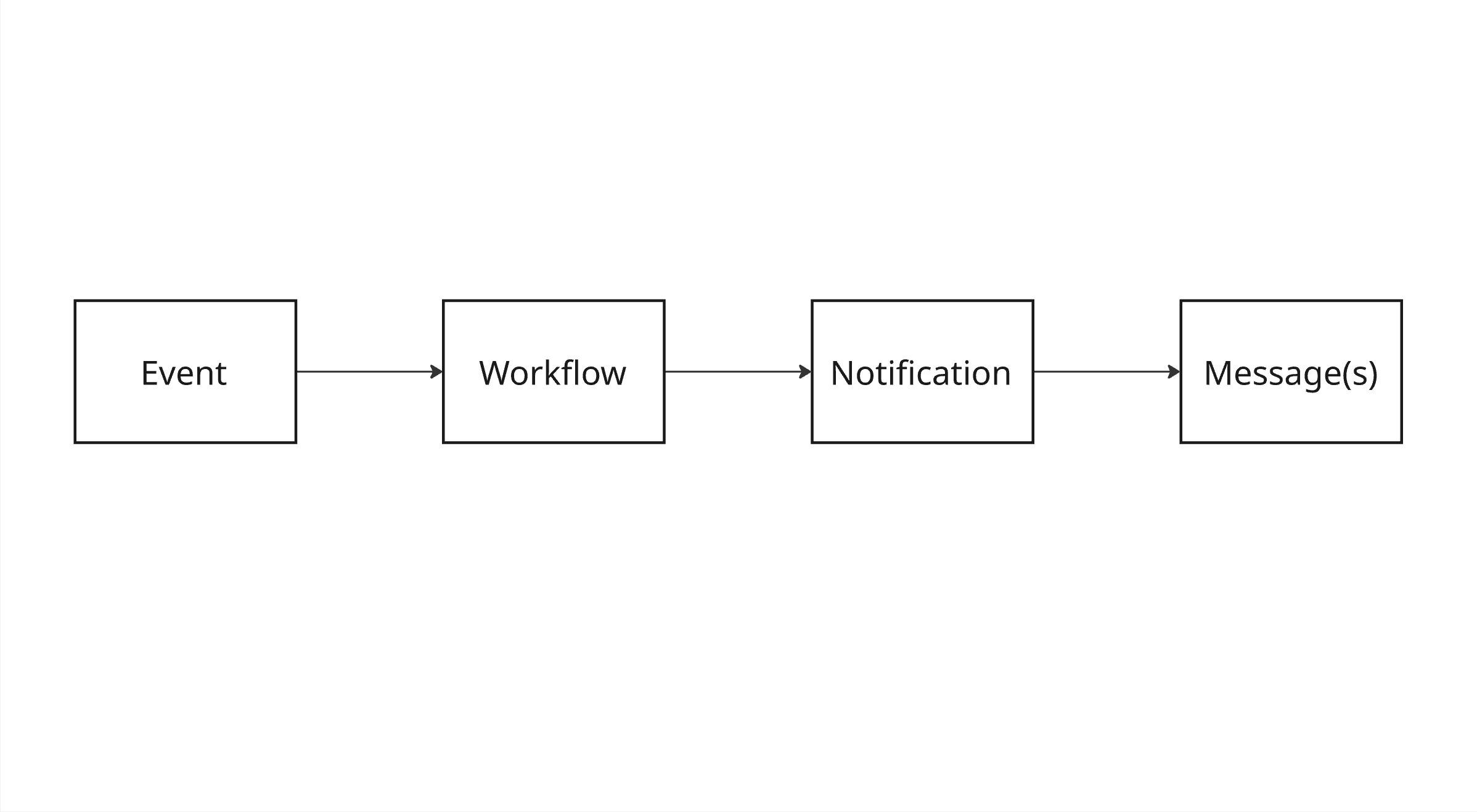Notifications
Learn about the Novu notifications lifecycle and the key entities that make up a notification.
In Novu, notifications are the core building blocks of your product’s communication experience. When your user receives a message via an in-app alert, an email, or a push notification, what they’re seeing is the final output of a notification.
Notifications represent the complete journey of a message triggered by an event in your application and delivered to a specific user across one or more channels. They encapsulate all the execution logic and delivery metadata in a single traceable unit.
Notification lifecycle
A notification doesn't exist in isolation, it’s the result of a sequence of interconnected entities working together. Here’s how it works in Novu:

Event
Something meaningful happens in your application, such as a user signing up, a password reset being requested, or a comment being posted. You emit this event to Novu using the Event Trigger API.
Each event contains:
- A name that maps to a specific workflow (user_signed_up)
- A payload with dynamic data
- One or more subscribers
- Optional overrides or metadata
This is how your application tells Novu, “It’s time to send something.”
Workflow
Novu matches the incoming event to a predefined workflow. This workflow is your logic for determining:
- What channels to use (email, in-app, SMS, etc.)
- What message templates to render
- When and how messages should be sent
The workflow is where message personalization, conditional logic, and multi-channel orchestration happens.
Notification
Once the workflow starts executing, Novu creates a notification for each subscriber involved. This notification acts as the central entity tracking everything that happens—every job, every message, every delivery status. It includes:
- The subscriber details
- The workflow run and template used
- The event payload
- Jobs executed
- Messages generated
- Status updates and errors
Think of it as the container for all activity triggered by a single event for a single user.
Message
Each step in the workflow results in one or more messages. These are the actual pieces of content sent to users' emails, push notifications, SMS, and in-app alerts.
Messages are live entities, tracked in real-time, with full visibility into:
- Rendering logic
- Channel used
- Delivery status
- Provider responses or errors
Notification structure
A notification in Novu is more than just a message, it’s a full record of what happened from the moment an event was triggered to when one or more messages were delivered or failed to deliver.
Each notification encapsulates a set of properties that describe its creation, context, execution, and result. These properties are essential for debugging, analytics, and tracking user communications.
Notification properties
| Property | Description |
|---|---|
transactionId | A unique identifier for this specific notification execution run. Useful for tracing across APIs and logs. |
template | The workflow (template) that was executed. Defines the steps and channels used. |
subscriber | The user who received the notification. Includes subscriber ID and metadata. |
payload | Dynamic data passed in from the event, used to render personalized message content. |
jobs | A list of steps (jobs) that were executed as part of the workflow. Each job corresponds to a workflow action, for example, send email or run delay. |
messages | The individual messages generated for each channel. Contains delivery status, content, and provider response. |
status | The current execution state of the notification (pending, completed, failed, and so on). |
These fields are accessible via the Notifications API and are also displayed in the Novu dashboard’s Activity Feed for visual traceability.